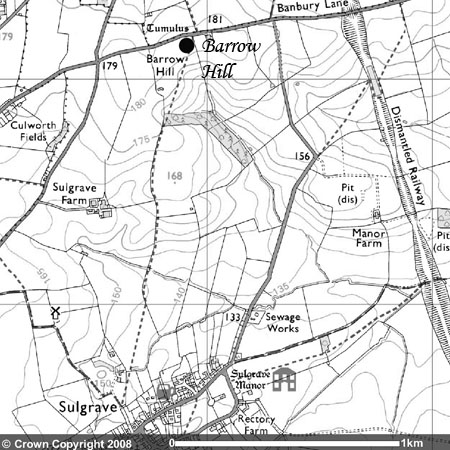
Image produced from the Ordnance Survey Get-a-map service.
Image reproduced by kind permission of Ordnance Survey
and Ordnance Survey of Northern Ireland.
EARLY HISTORY
(Back to Chapter 1 Index)
Barrow Hill is the site of a supposed Bronze Age tumulus or burial mound. Here in this commanding position a Bronze Age Chief could well be buried in a position that all his tribal followers could look up to from miles around. The hills around Sulgrave were probably cultivated by such peoples. The thin well-drained soils suited their ploughs which would be too primitive to shift the heavy clays lower down in the valley.

Image produced from the Ordnance Survey Get-a-map service.
Image reproduced by kind permission of Ordnance Survey
and Ordnance Survey of Northern Ireland.
However, it is not until Saxon times that we have real evidence of man's permanent occupation. The very name Sulgrave is thought to be derived from the Old English 'Sulh' meaning channel or passage and 'graef', a pit or trench. But Baker, in his "History of the county of Northampton" (1820), suggests it is derived from the Saxon words for a plough and a wood. What is certain, however, is that the Saxons began the system of strip farming which has left its evidence of 'ridge and furrow' in many fields within the Parish. Each man was given a series of strips in various furlongs (blocks of strips going the same way) thoughout the Parish. Through centuries of ploughing their strips, farmers have created the characteristic ridges, divided from their neighbours by a parallel series of furrows.